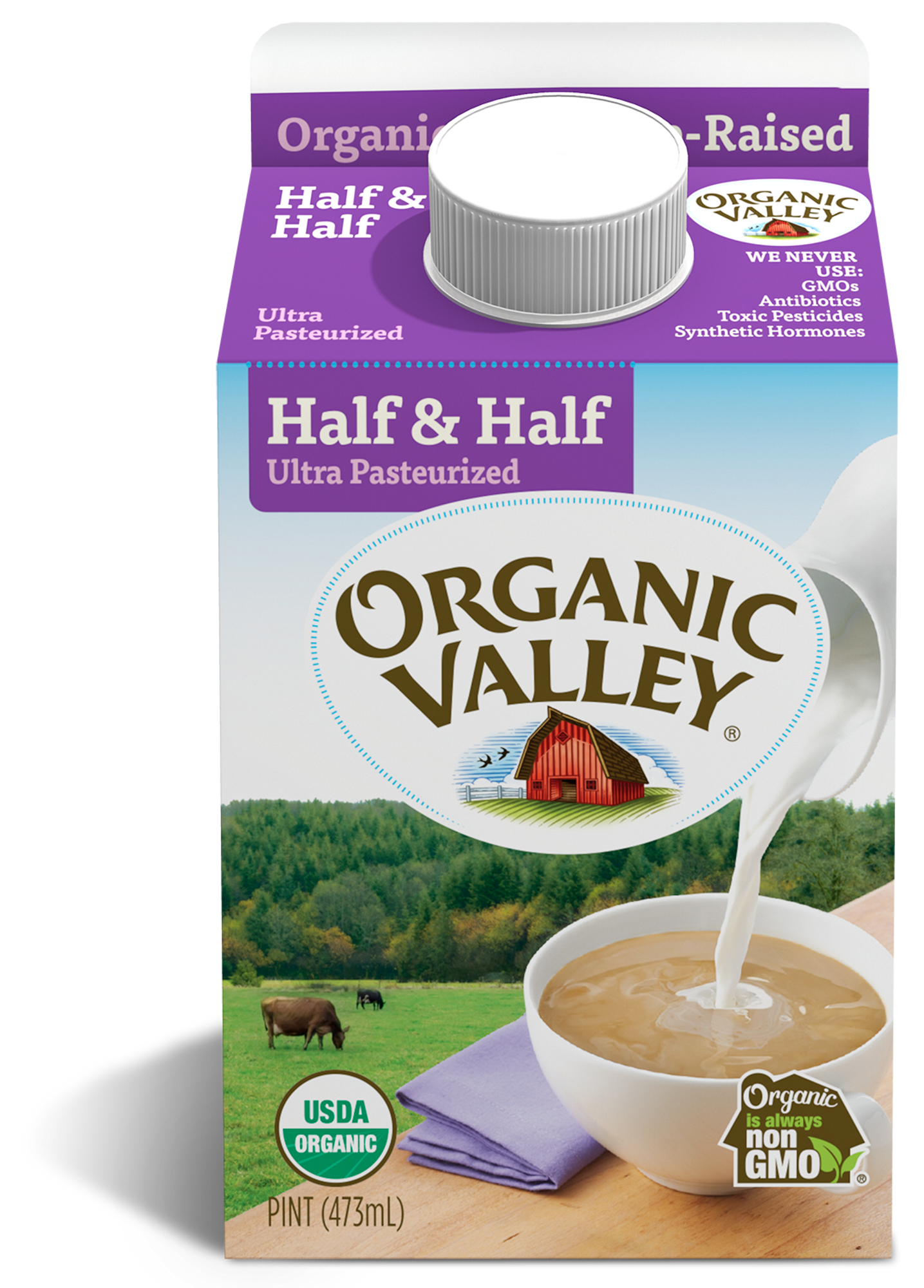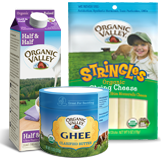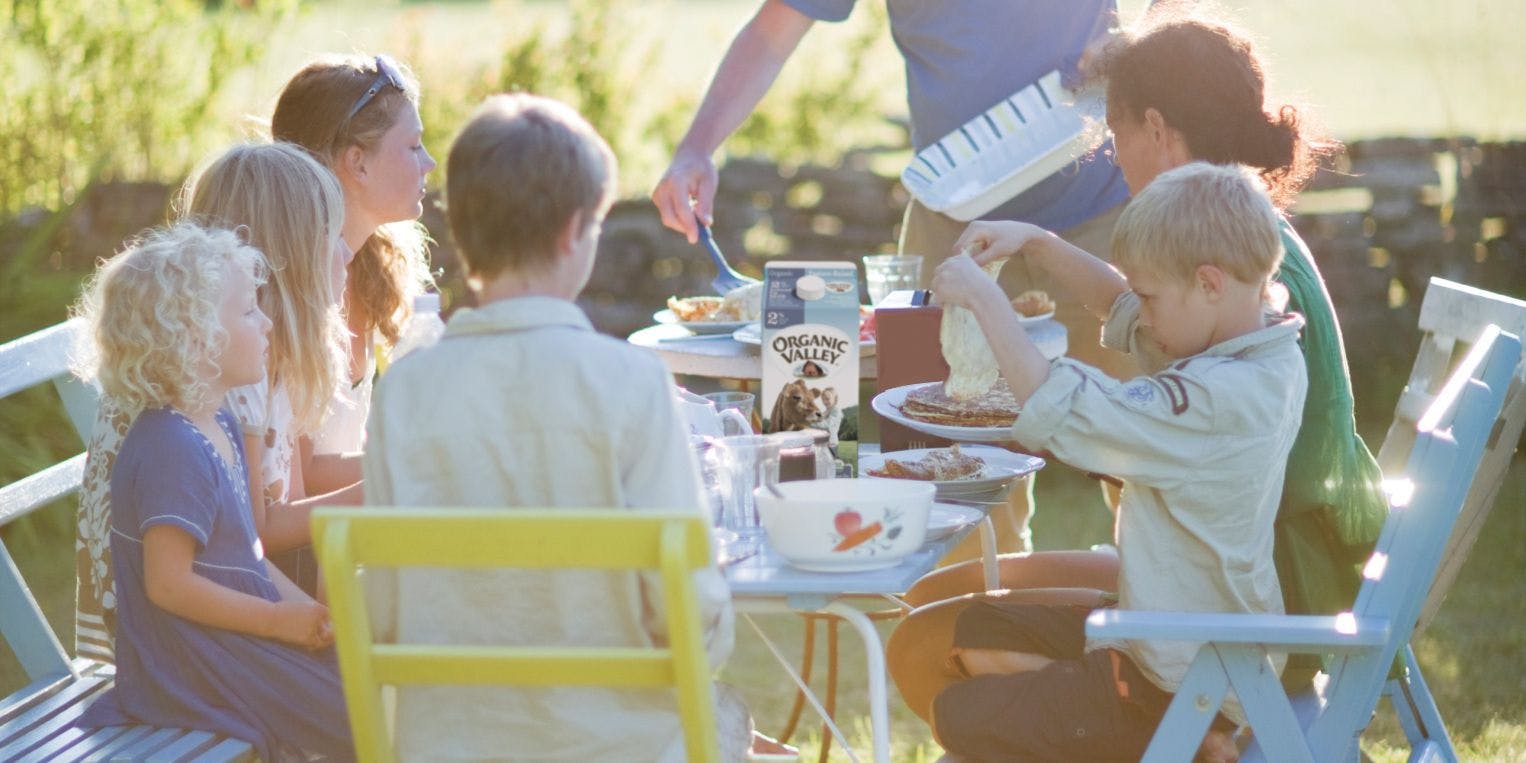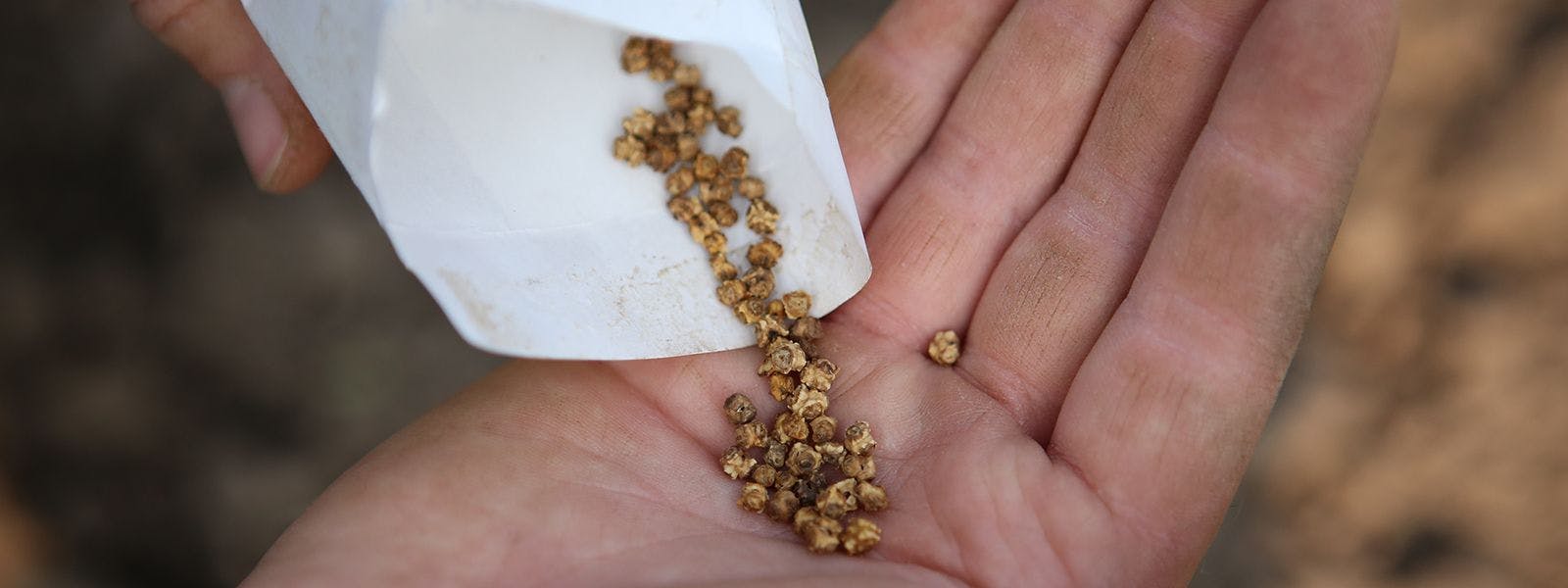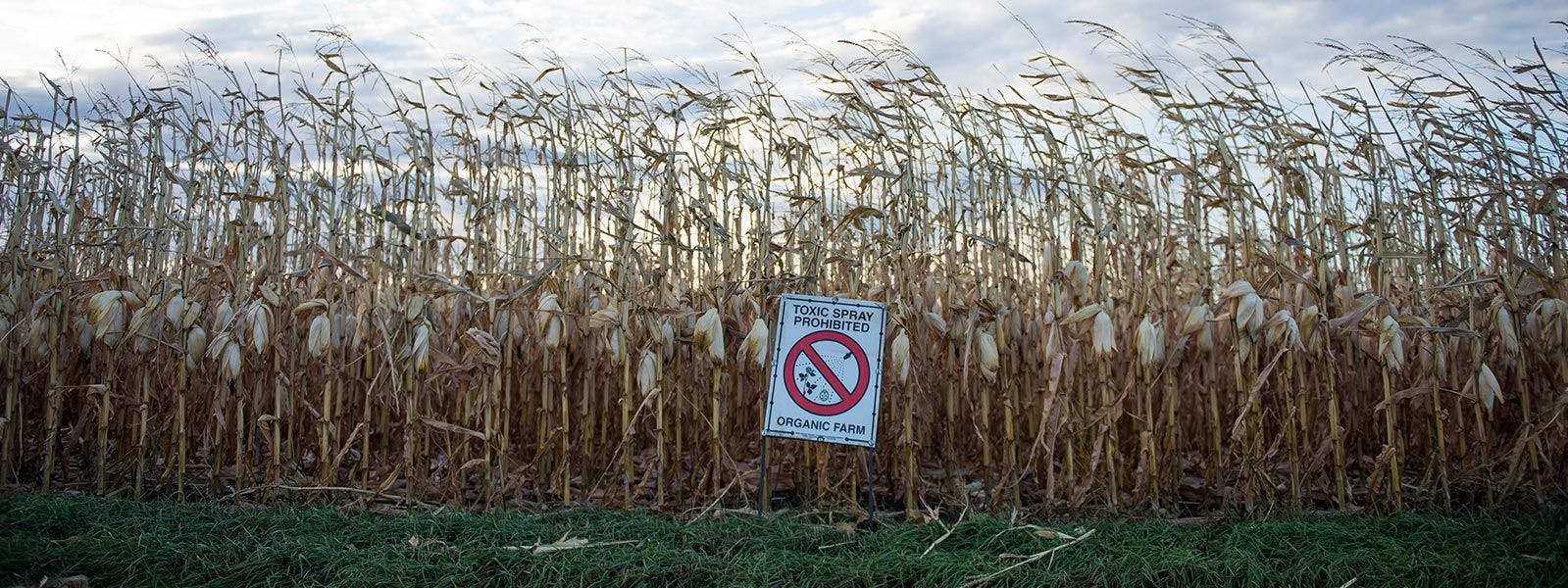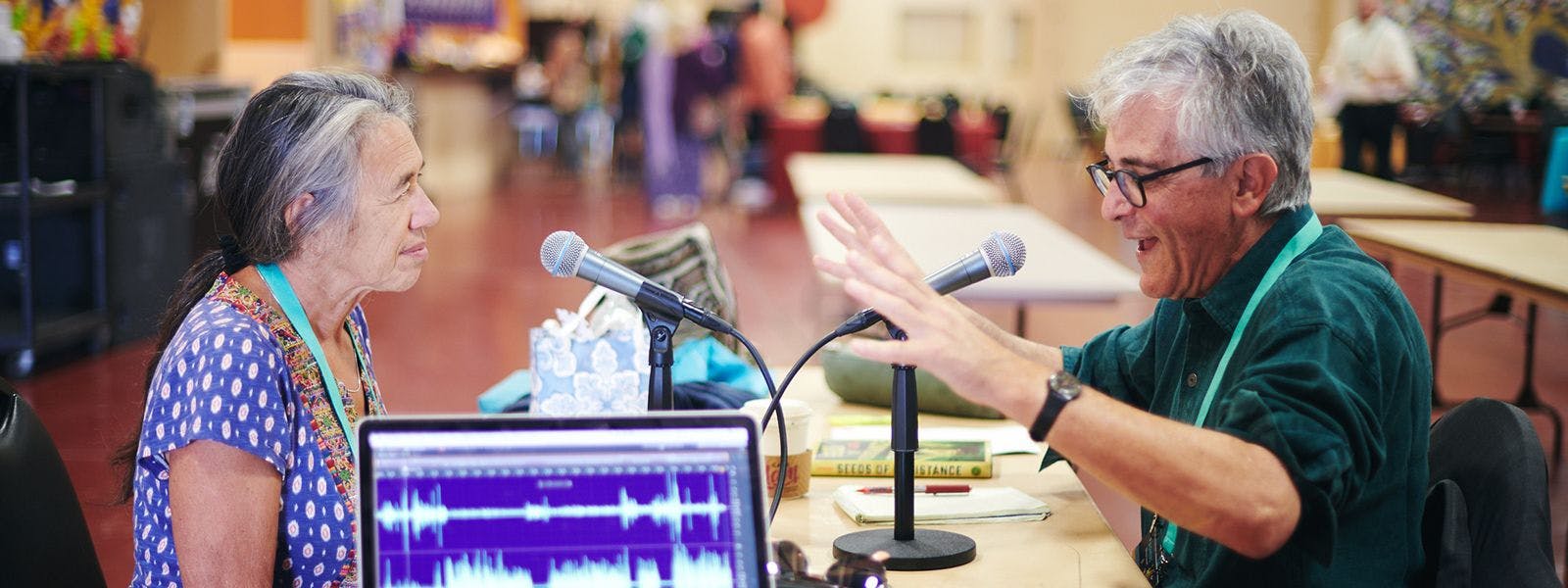
Organic
Cara Loriz: Protecting the (Often-Overlooked) Foundation of Our Food System
Have you ever stopped to think about how the plants that produce our seeds are treated? Today on Rootstock Radio Cara Loriz, Executive Director at Organic Seed Alliance, is talking about an often-overlooked and truly fundamental piece of our food and agriculture system: seeds. After all, we couldn’t produce any food without these tiny miracles. Seed work is Cara’s passion and expertise, and Organic Seed Alliance—which celebrated its 15 year anniversary in 2018—is doing incredible things around education, conservation and advocacy involving seeds.


Tune in to hear about:
- How Organic Seed Alliance is making it easier for farmers and gardeners to grow their own seeds.
- The difference between ‘Heirloom’, ‘Open Pollinated’ and ‘Hybrid’ seeds.
- Why seed banks are so critically important for the survival of our world.
- What makes a seed organic.
- How we can rebuild biodiversity and plant hardiness through seeds.
- Why the fact that biotech controls a lot of the seeds in the world is so alarming (and what we can do about it.)
Listen at the link below, on iTunes, Stitcher, Google Play, Spotify, or wherever you get your podcasts.
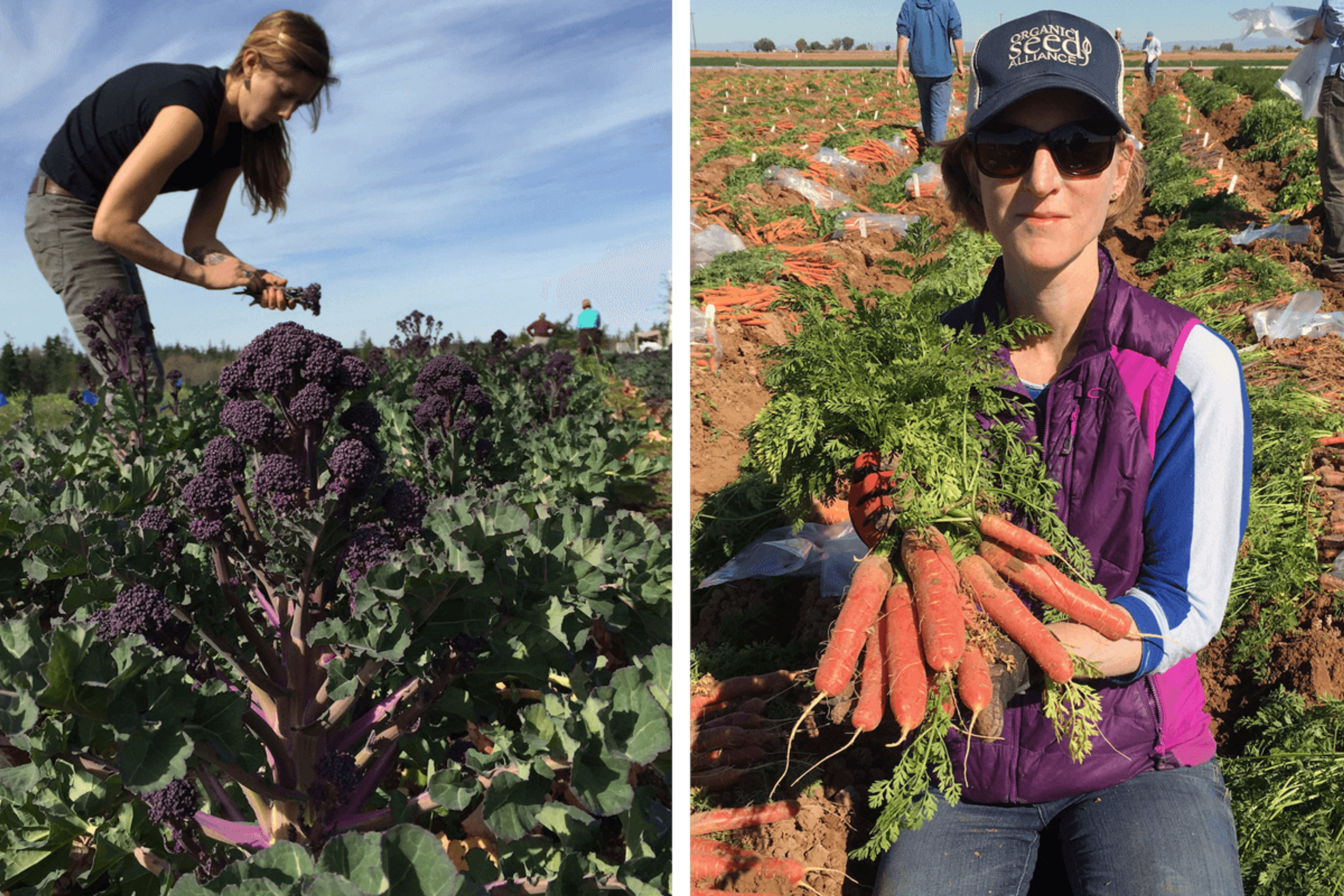
Rootstock Radio Interview with Cara Loriz
Air Date: May 6, 2019
Welcome to Rootstock Radio. Join us as host Theresa Marquez talks to leaders from the Good Food movement about food, farming, and our global future. Rootstock Radio—propagating a healthy planet. Now, here’s host Theresa Marquez.
THERESA MARQUEZ: Hello, and welcome to Rootstock Radio. I’m Theresa Marquez, and I’m here today with Cara Loriz, executive director at the Organic Seed Alliance. Today it is going to be an exciting conversation that we’re going to have around the little thing that we call seeds. Welcome, Cara.
CARA LORIZ: Thank you so much. I’m so just glad to be here.
TM: Yeah, it is so fantastic to be talking with someone who really has some depth of knowledge about organic seeds. I think it’s just something that a lot of us don’t think about very much, like, “You know, seeds—so what’s the deal?” So I guess the first thing is the Organic Seed Alliance. Tell us about it. Why is it important?
CL: Oh, sure. You know, seed is too often overlooked as a fundamental piece of our food and agricultural systems. But it is absolutely crucial to it and largely dictates the quality of our food, has enormous impacts on how we farm and what we eat. And the Organic Seed Alliance was founded, we just celebrated 15 years in 2018, and was founded from a great history of conserving heirloom seeds and getting them in to farmers to grow them out and keep them going in a seed bank called Abundant Life Seed Foundation. And that particular organization, though, had done great work and then had a fire that destroyed the seed bank. And so all of that work and all of that heritage really kind of went up in flames, although the farmers still had a lot of the seed that had been distributed to them through the years.
TM: Wow!
CL: And the organization basically had to figure out, well, are we going to start over, or are we going to move this forward in a different way? And so they elected to focus on educating farmers on research related to seed, and both improving seed and, in addition to looking at what the germplasm and the heritage seeds are that we have now, making it easier for farmers to grow their own seed, and eventually got into advocacy, where we’re very involved with seed policy at the national level. And it does come up at regional levels and state levels as well.
TM: Well, you know, it’s so interesting. So the Alliance is really, you’re the 501(c)(3), you’re the executive director, and the “alliance” is with all the farmers, isn’t it, and with other seed savers?
CL: Yes, we’re kind of the convener of how our food system in the organic world relates to seed and how we use it and how we improve it. And so we work with farmers, we educate farmers, but we also connect them to other parts of the food industry, either through teaching them to grow seeds and then selling seeds, both on contract to seed companies, and occasionally we’re working with larger food distributors to make sure that they have the kind of varieties that they want. We work with chefs, and all of our research on varieties includes culinary traits. We’re working on nutrition, we’re working on agronomic traits, on climate adaptability, but also on culinary traits. So these things are tasted, they’re celebrated at tasting events that chefs just really get excited about. So we’re sort of the convener of all of those different pieces, and it starts with the seed. And too often, again, we don’t think about it as that first input for our food system.
TM: If I recall, the Organic Foods Production Act of 1990 did not require organic seeds, and people didn’t really talk much about… Well, we talked a lot about it, but it just wasn’t something that we could say, well, we could all use organic seeds. So why organic seeds? Why are organic seeds more important than just the average kind of seed that you can get at Burpee?
CL: Well, you know, our founding also happened to coincide almost with that rule changing, with the rule being added to the Organic Standards that organic farmers will use organic seed when it’s commercially available. And one of the reasons we needed to do the work was because there wasn’t a whole lot of certified organic seed at that time, around 2002, 2003. How were farmers going to use this as their primary choice for seed when it wasn’t being grown and marketed in any kind of volumes? And so when that rule came on, that kind of helped reinforce that seed.
But we also had so many other things going on in the food world at those times, including this movement to patent, to include genetic modifications in varieties, and all of these changes. And also the buying up of all these small seed companies that were the ones that would naturally be doing these organic seeds, such that this dominant seed system is controlled by a handful of chemical and biotechnology companies, with no genuine interest in the success of organic agriculture. And so we’ve gotten into some of those intellectual property rights issues on the advocacy side too.
But in just the plain understanding of how we support an organic movement, when we need to be growing this plants from organic seed, we really just needed to get out there and get more farmers interested in growing their own seed. Take, get away from this dominant system and make it much more democratic. And you put it back in the hands of farmers, give them those tools again, and have new seed companies coming up that are all about organic seed.
There’s also another side to it, in that organic seed is different from conventional seed. The people who buy organic food and grow organic food know what the food differences are, but the seed is different too. And so conventional seed is often grown with a lot of pesticides and fungicides. We don’t think about the life cycle of a plant all that much, but all of our food plants have a life cycle, just like any plant. And so in order for those plants to go to the seed production, to that maturation and reproductive stage, they have to hang out a lot longer, they have to withstand a lot more of the environmental challenges that all plants face. And because of that, because they need to be kept dry and not get rot and not get fungal infections and all these other things, a seed plant in conventional agriculture can be sprayed with more pesticides than is allowed in a food plant.
So when we think about why we want organic food, that really needs to go into our thinking of why we want organic seed. If you want food that’s free of pesticides, you really want to think about organic seed as the seed that you know you can have faith in was grown without any pesticides, was grown in a way that…was grown in an organic environment. Therefore those plants and that food is going to thrive in the organic environments that our organic farmers have created.
(8:07)
TM: So organic seeds just are going to be worked on, bred for some very distinct characteristics that simply are not the same characteristics as conventional seeds. I was reading a story somewhere about, believe it or not, African slaves coming over, and that they would hide seed in their hair because they wanted to bring seeds with them, the food that they loved. And we probably don’t know it, but we probably have some real descendants of those seeds in our food today. But you know, when you started talking about farmers saving seeds, I have a feeling that, I bet some of us feel like, well, didn’t farmers always save seeds? And what happened?
CL: They were absolutely the primary stewards of our seed supply. And for generations they would grow plants, they would have some of them that they would let go to maturity and produce seed, and they would usually do that with the best of their plants. So the next season, when they plant that seed, they’re planting it from the very best, and so they get an even better crop the next year. And they have that cycle through time, and then they’re saving their own seed, they’re also learning about how, seeing how the plants cross-pollinate in nature, doing the same things themselves. And so they were long these stewards of our seed supply.
And in the 1900s, with industrialized agriculture, that knowledge base was supplanted by what were promised to be more efficient, more productive, better methods. In other words, the industrialized agriculture depleted seed resiliency and biodiversity in favor of yield and uniformity. And so not only has the biodiversity been decreased but so has the knowledge, because farmers were put into a business model that didn’t include seed saving. They needed to buy hybrid seeds this year, this year, then again the next year. So it’s going back, in some ways, to that more traditional model of the farmers, but we’re combining it with the science that we have today so that we can make improvements and really know what kind of genetic traits are coming out that the farmer is looking for.
TM: Well, you know, I’m also fascinated and have talked to other chefs as well who are so interested in this other part of seeds, and that is breeding seeds for flavor and taste, and also for size, because sometimes it’s a lot easier for the restaurants and food service institutions to deal with certain kinds of sizes. And you talked about how the modern conventional seeds today—and of course, we’re not talking even just about biotech seeds—but are mostly for yield and uniformity, and then minimally flavor. If the flavor’s okay, they’re okay. So is it really the organic seed growers who are really leading the charge on this whole new idea of seeds that are for food that’s really got a lot of flavor and nutrition and other kinds of characteristics?
CL: You know, I don’t know whether it’s because of the scale that some of the organic farmers are growing versus some of the very, very large conventional agricultural operations. We do have big organic farms too, and they’ll benefit from this work, but they can’t necessarily dedicate their farm space to doing, you know, six trials of the seven new varieties of tomatoes that are coming out. And so we, at the organic scale it is, we’re all just so much more tied to the earth and understanding the full cycle of the whole picture of, you know, from seed to table.
And it’s created this community. And I think that’s one of the things we talk about in the organic movement, more than anything else, is how do we distinguish ourselves as seed growers? How do we distinguish ourselves as an organic community? And part of it is that we share everything, that we make it easy for everybody to innovate, and that we include all the different parts of our food system in that. And it really has had wonderful benefits. And one of our partners is the Culinary Breeding Network, and they help us produce all kinds of great tasting events that showcase the breeders, match them with a chef, and we get these really great new tastes that we wouldn’t even be talking about if we didn’t have both an interest in our food and what it tastes like and an interest in how we grow it. And so this wonderful combination is creating some really nutritious, delicious food.
TM: You know, the other thing about organic seeds, or about seeds in general, that perhaps not a lot of our listeners know is that we used to have so many more seeds than we do now, and that the consolidation of the seed industries—apparently half of our seeds are owned by only four seed companies—but also that we’ve lost a ton, a ton of diversity in our seeds. And I wonder if you could talk a little bit about that.
CL: Sure, sure. The loss of diversity is primarily in these commercially available varieties. And this, most of the data is going back to the ’80s and ’90s when they’re looking at a hundred years ago what were in the seed catalogs, at the turn of the last century. And when you compare those two things, the amount of variety, distinct varieties that are available to gardeners and farmers has decreased dramatically. And the genetics of those old heritage plants have been conserved by a lot of people over the years. And so even though the diversity has been lost in terms of what’s easy for people to get, the material is still there, at least a good chunk of it is, and so we can grow that biodiversity back. And that’s part of what our work is. And it’s very exciting to try to find new combinations that create a variety that has some of the wonderful traits of an heirloom but then it can deal with climate change; it can deal with the increased temperatures that growers, where that heirloom did really well a hundred years ago, are dealing with today. And so it has been a huge shrinkage of the varieties.
And the other piece that goes along with that is, by patenting the seeds and owning the seeds, that privatization piece and commercialization piece of the seeds that used to be shared and swapped and grown by farmers themselves, by restricting people’s ability to do that, the dominant seed industry has really made it difficult for these small farmers to be the seed stewards that we need them to be. We really want the future of our food supply to be in the hands of farmers and not agrochemical companies.
TM: Well, I’m glad that you brought up this patenting of seeds, because it’s always made me scratch my head. I can’t understand how it is that we can patent seeds. How can you describe or help us understand, where the heck did patenting seeds come from, and why is that even allowed?
CL: Well, there’s a lot of folks who have studied this and can speak to it with much more expertise than I can. But from a general layperson’s view, what really happened in the court system is that they went from viewing seeds as life to viewing them as an invention. And so for a seed company to create a unique cross or a unique hybrid of a variety using, that can’t be done in nature, they can go ahead and they can patent that. And so it basically limits what you can do with the seed going forward. But there’s still a lot of seed that is available for farmers and gardeners and researchers to work with that is open-pollinated, that is not restricted. And so we’re trying to grow that germplasm base that we can all work with and share.
And it’s incredibly important that this be supported by the public. And we have been, on our policy side, we’ve been advocating for the federal government to put more funds in what we call public cultivars. And so public cultivars will be these varieties that can be shared, that can be saved, that you can do research on, that you can cross with other varieties and keep growing the biodiversity of our food supply. The amount of investment that goes into the private and the corporate seed world is enormous, and so we really need to be… We can’t restrict it with the law, as we have tried, and the law has been on the corporate side in recent decades. So we have to do it ourselves. We have to do the hard work of growing back this biodiversity. But we need public support, we need government support, so that we can have more of these out there and available, and more research and more people working with them.
(17:32)
TM: If you’re just joining us, you’re listening to Rootstock Radio. I’m Theresa Marquez, and I’m here today with Cara Loriz, executive director of the Organic Seed Alliance, and we’re talking, of course, about a very, very important topic, and that’s seeds. And we were just talking about the patenting of seeds or, you might say, the corporatization of seeds. I want to make sure our listeners know, SeedAlliance.org has a website. The Organic Seed Alliance is a not-for-profit, and you can see, working on just so many aspects of seeds and their wonderful potential to really keep diversity and flexibility that’s going to be critical as we face climate change.
I know also that you are part of a large network of seed savers around the globe, and that there actually are vaults of seeds, aren’t there, being stored in different places all over the world. Maybe you could say a little bit about that.
CL: Sure. So the conservation side of seed work is so important. And we got to see it in stark terms when supplies of [unclear—a basic?] seed bank in Syria was bombed during the war there. But they had a backup supply of seed at the International [Global] Seed Vault in Svalbard, and so they were able to regain some of the material that they had lost. And so that project is a fantastic project and we need to support those kind of seed-saving initiatives.
At the same time, we’re also, while we want that material, we want to have the backup supply, we want to have the material saved and conserved, we also, one of the things we focus on are the heirlooms of tomorrow. And so we know we need both those pieces. So we need to save and conserve, and make sure we’ve got a supply so that we can regenerate our food supply if something happens to it. And then at the same time, we’re using that material that’s out there and available to us now to try to come up with varieties that are going to be more resistant to some of the environmental challenges we’re looking at now. And open-pollinated organic seeds are all about that, and it’s all about putting it in the hands of farmers so that they can make those improvements and changes for themselves.
TM: You know, I think it would be terrific to do just a little bit of an explanation to our listeners on what are heritage seeds versus hybrid seeds versus open-pollinated seeds. Because you hear those terms all the time, and sometimes it’s a little confusing.
CL: Sure. So heirloom varieties are varieties that go back and tie into someone’s heritage or to their family that they’ve stewarded for years and years. And these tend to be open-pollinated varieties that, when you plant them, they will produce seed, and then you grow that seed it will be pretty much what you had grown before.
When you develop a hybrid seed, you’re basically using some human intervention to cross-pollinate a couple of different varieties. And so you’re doing a cross or a combination of varieties that wouldn’t happen in nature. Varieties cross in nature all the time, and if you have a garden and you grow a whole bunch of different peppers, and one of them is really hot, you’re going to find out real fast, because oftentimes all your peppers will end up being hot, because they can actually cross-pollinate as they’re producing the fruit of that season. And so you can get some of the traits of the one hot plant into all the other plants as it’s growing.
So we have the open-pollinated plants, heirloom plants. The hybrid plants, again, they’re just combinations that are made with human intervention. And because that human intervention is involved, those tend to be ones that can be patented. They aren’t always patented. But the interesting thing about hybrid seeds is that they contain a lot of different genetics because they have crossed things in ways that don’t happen in nature. So we have a seed grower in Oregon, Frank Morton, that has taken a pepper hybrid that was being discontinued from a catalog years ago and managed to grow out twelve different varieties of pepper from that one hybrid.
So there’s all kinds of fascinating things with the genetics of plants. And we need a lot of different varieties and combinations of plants in order to meet, both to feed the planet and to have the maximum adaptation as we move forward. But it is the open-pollinated varieties, the ones that pollinate naturally, produce seed, and then that seed can be grown again, that are the ones that we save, because we know what we’re going to get when we do those. They may have crossed naturally, but it’s generally going to be the plant that you started with.
(23:00)
TM: It is fascinating. And you know, you talk a lot about working with farmers, saving seeds, developing different kinds of varieties. How about gardeners? Do you try to encourage gardeners to also save seeds?
CL: Absolutely. And our focus is on agriculture, and especially supporting organic farmers, but also any farmer that is growing in harmony with the ecosystem, so anyone that’s trying not to use pesticides and is trying to grow with organic methods, our work will benefit them. But it also benefits gardeners. I mean, we do basic seed-saving workshops for both beginning farmers who are just beginning to get into seed work, and gardeners who are interested in it as well.
And gardeners are really some of the great plant breeders of the world, and they’re always trying—because they can do on a small scale because they’re doing it for the love of it, they can come up with some really great new innovations. And all of our resources that we provide—we have a lot of educational resources, quite a few webinars and quite a few publications on our website, and they are part of our participatory and democratic system, they are there for everybody, they are free to download. And we get thousands of these downloads every year from all over the world, so it really is part of disseminating this knowledge and this passion for seed work. And we hope gardeners will take advantage of that too. And we actually know quite a few of them do, and it’s exciting to see the work that they’re doing as well.
And it’s also important, I think, to support gardeners growing their own food, to give them that perspective of what it must be like for farmers to grow food for everybody. And so we also work with seed libraries and certain communities that are trying to develop a seed library to grow a truly local supply of seed. And we work with school gardens as well, because we just feel that it’s so important that everyone have this understanding and appreciation for seed and for the farmers growing their food.
TM: And so those gardeners out there can go onto your website, SeedAlliance.org, and probably find some videos on tips on how to save seeds.
CL: Right. And so if you go to our Publications page, you’ll see all kinds of different documents that you can download. But we also have links under Resources and our Publications page to some of the webinars that we’ve done, that we do in conjunction with the organic and with other projects. And we have some on seed economics, on variety trials. Variety trial is a great tool for farmers to test which varieties are going to do best on their farm. And even if you’re a farmer who’s not going to do a variety trial, there’s a lot of data out there from the trials other farmers have done. So we’re trying to share all that and make it accessible to everybody.
TM: That is so, so excellent. Just a quick little story: a person that I work with is from Romania, and she was going to visit her mother, and I said, “Gee, would you ask your mother if she has any seeds from Romania that you might bring back with you?” She came over and she said, “My mom sent you some seeds,” and she had a piece of newspaper that was torn, but she had put a tomato on the paper, let it dry out, and the seeds stuck to the paper. So I was like picking all these little seeds off this paper. And oh my gosh, they were so hearty and so delicious.
CL: Yeah! That’s great.
TM: And they grew so well. And I thought, wow, maybe it’s not as hard to save seeds as we think.
CL: No, and if you’re doing tomato seeds, everybody has their own ways of doing it, mostly similar in how we save the seeds. But I like to eat tomatoes, so I don’t have tomatoes that I eat and tomatoes that I save seed from. They’re the same tomatoes. And so I just, when it’s time to harvest these beautiful tomatoes that I want to have every year, I just harvest them, I slice them in half, I squeeze the juice and the seeds out and run them through a little bit of a strainer, but squeeze all that out, and then I roast the tomatoes and make sauce with it.
But the seed, all that wonderful seed material—the pulp, the juices, and the seeds themselves that come out of the tomatoes—I put all that in a jar with the juices; you want all those good juices in there. And you just let it sit, and it starts to ferment and get a little bit funky. But after a few days, that basically, if you think about it, that seed, if it could just germinate and grow a new plant when it’s wet, all of the tomatoes, when you open them up, would have little tiny tomato plants in them. And so basically that process breaks down that outer coating that protects the seed, and then you have these wonderful tomato seeds for growing the next year. I basically just take them after they’ve fermented for a little bit, strain them out so that they can dry, and I dry them on a coffee filter on a paper plate, and they come out great. So everybody has different little tricks and home ways of doing those sorts of things. But I say eat the fruit and save the seeds.
TM: That is a wonderful description of how you save tomato seeds. And once again, SeedAlliance.org to learn how to save seeds from your garden.
Cara, thank you so much. That was so lovely to talk about how we can take seeds and bring them back into our culture and heritage, and it’s not just about yield and efficiency. So thank you so much for all the good work you’re doing and all the good work for Seed Alliance.
CL: Well, thank you very much. It’s always a great day when I can talk with people about it.
You can listen to Rootstock Radio on the go wherever you get your podcasts, and find us online at RootstockRadio.com. Rootstock Radio is brought to you by Organic Valley.
© CROPP Cooperative 2019
Related Articles
- Tags:
- cooperative spirit,
- seeds,
- pollinators,
- women in food & agriculture






